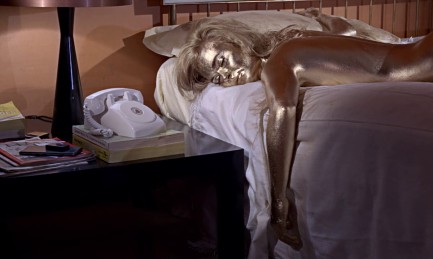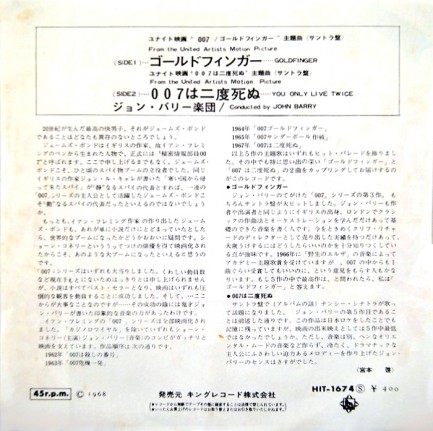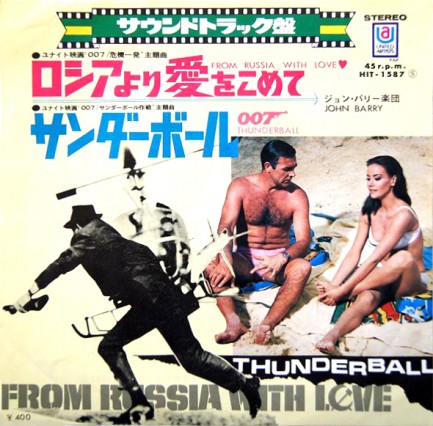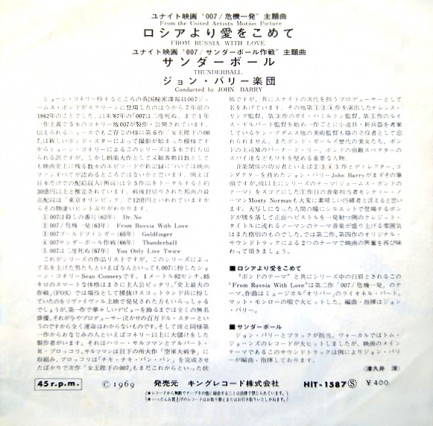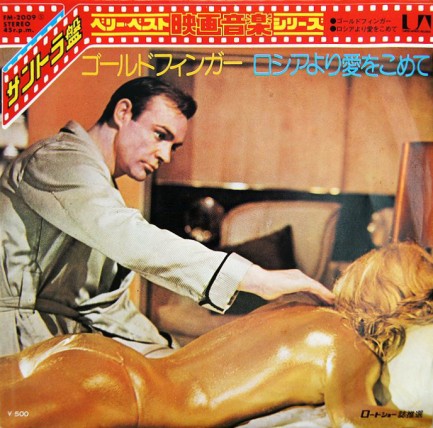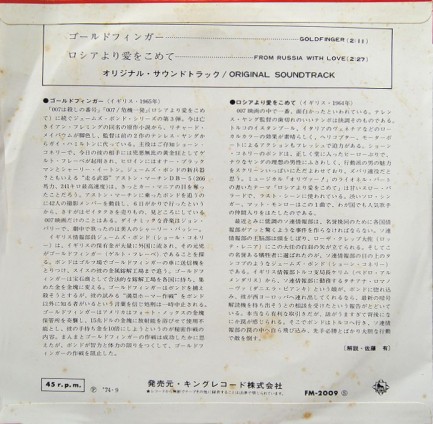 Spillane gets mad and gets even in Red Scare revenge thriller. 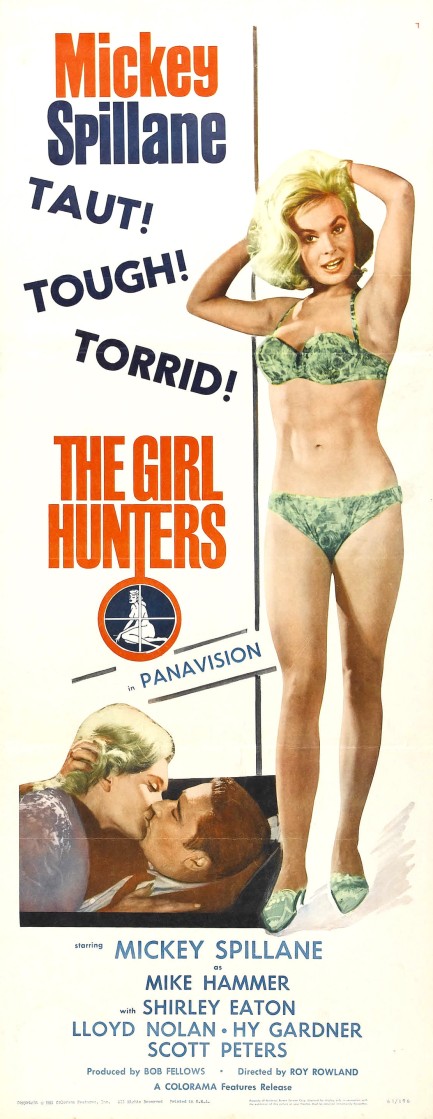
We're on a roll with these panel length posters. Here's another excellent example, this time for Mickey Spillane's The Girl Hunters. And when we say Spillane's, he didn't just write the screenplay (with an assist from Roy Rowland and Robert Fellows)—he starred. That Hollywood felt he could carry a movie gives you an idea just how big a celebrity he was. He also co-headlined 1954's Ring of Fear, but we'll get to that one later. In The Girl Hunters Spillane plays his own literary creation, hard-edged private dick Mike Hammer. The movie opens with Hammer as an alcoholic because his longtime secretary and unrequited love Velda has been missing and is presumed deceased. But when a dying hood hints that Velda is still alive, Hammer snaps out of his drunken stupor, shifts into revenant mode, and along the way uncovers a communist plot headed by “the greatest espionage organization ever known.”
Obviously, the salient question is whether Spillane can act. The answer is not really, and his one-note performance keeps the film from reaching its potential. A couple of times it even sounds like his lines are voiceovers by another actor. However, there are two high notes: a pretty good climactic fight in a barn equipped with a whirring rotary saw, and a co-starring turn from future Bond girl Shirley Eaton, who the filmmakers give three extended bikini sequences to heighten audience interest. Are those bonuses enough to make the film worth a watch? We would say no, but you can't get around the fact that it stars one of the best-selling crime writers ever. If you're a fan of pulp, we suspect you'll enjoy the movie despite Spillane flatlining through its 103 minutes. The Girl Hunters premiered today in 1963.
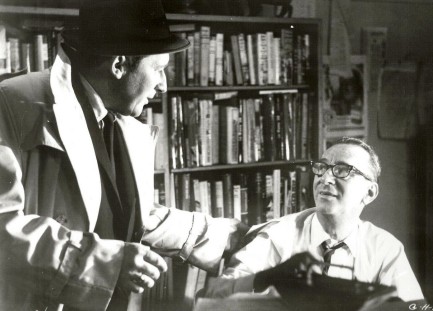 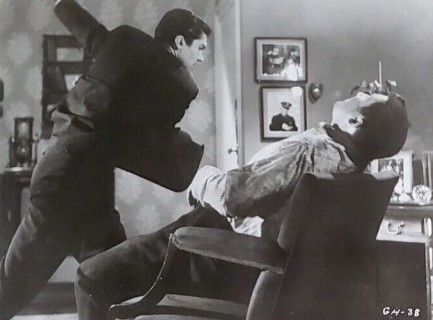 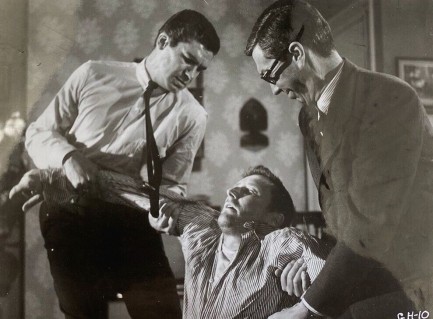  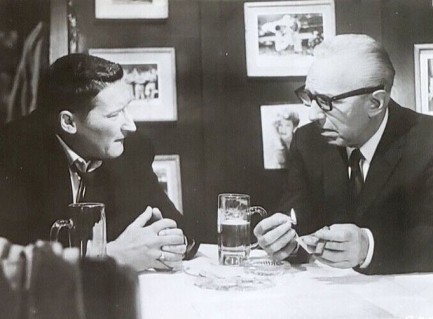     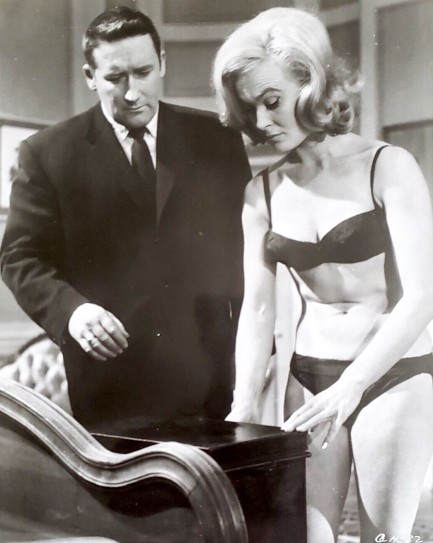 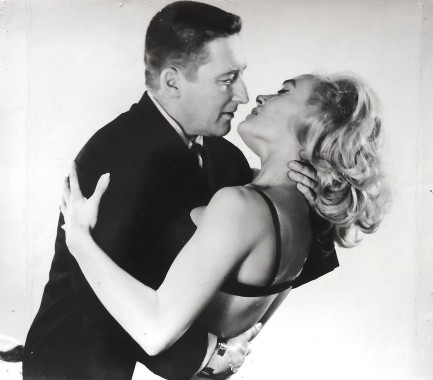 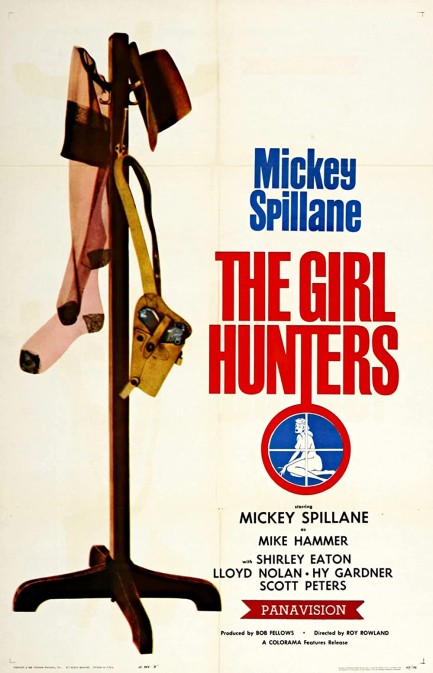
 It was a good thing for its readers Hush-Hush didn't know the meaning of the term. 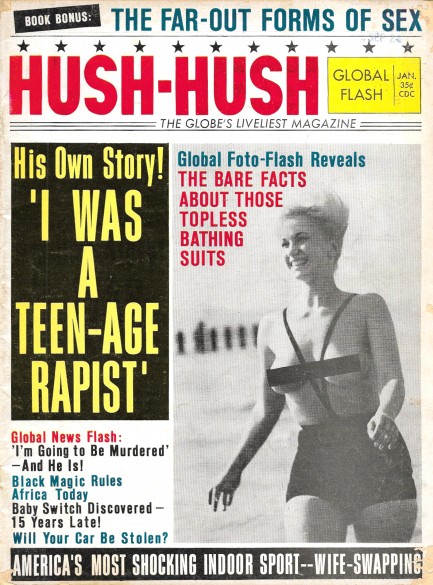
No, we're not going to get into teen-age rapist story that dominates this cover of Hush-Hush published back in January 1965. Though based on a real occurrence, the article is titillation disguised as crime reporting, written during an era when many men thought of rape in one of three ways: vandalization of personal property if the victim was his wife or girlfriend; an attack on the family castle if she was a relative; and she asked for it, which was reserved for most other women. We stress “many men,” not all. From what we gather the majority properly saw it as a heinous attack on the woman. Of course, the vicious nature of it didn't stop it from being widely used as a cinematic and literary device, but that's another discussion, one we've already had and doubtless will again.
Elsewhere on the cover you get photographic proof that topless bathing suits really did exist during the 1960s. There are only a few photos of the things, but Hush-Hush adds to the library of visual confirmation. Now we need proof of the existence of David Dodge's completely backless cache-sexe that made women look nude when viewed from the rear. He says they were worn on the French Riviera during the 1950s, but we have a feeling proof won't be forthcoming anytime soon, absent a time machine and careful coordinates. Lastly, the cover's bottom banner touts wife swapping. How popular was this practice? We can't know. We suggest asking your grandma. But first compliment her cooking: “This casserole is delicious, gram-gram. Did you and paw-paw ever screw other married couples for kicks? Can I have more peas?”
The next article we want to call attention to is, “How Do Tahitian Beauties Drive Men Wild?” Vintage novels that waxed pornographic about the sexual attitudes of Pacific Islanders were almost an official sub-genre, so this story was a must-read for us. And for you too, which can do below. At least mostly. We couldn't upload the entire thing. It's too long, but there's enough to give you the gist. And the gist is simply that Tahitians apparently had no taboos concerning sex, partners, and privacy. The story is framed around alleged trysts with various Hollywood stars, and how Hush-Hush avoided lawsuits from those stars is really a mystery. You'll be entertained. We will say, though, that it's rather unfortunate that the story is couched in insulting terms toward Tahitian women.
As a final note, Hush-Hush used a cheaper printing process and lower quality paper than other publications from the same rank. Those two aspects of the magazine worsened as time passed. By 1965, it was barely a step above the National Informers of the world in terms of technical values. Because of that our scans aren't great. The cheap printing resulted in a scanner moiré pattern on most of the black and white content (though the color came out fine). It's actually fixable in Photoshop or Gimp, so we hear, and we have both programs, but do we want to do all that work for cheap-ass Hush-Hush? We decided we didn't. Therefore, what you see is what you get—twenty-plus scans below.
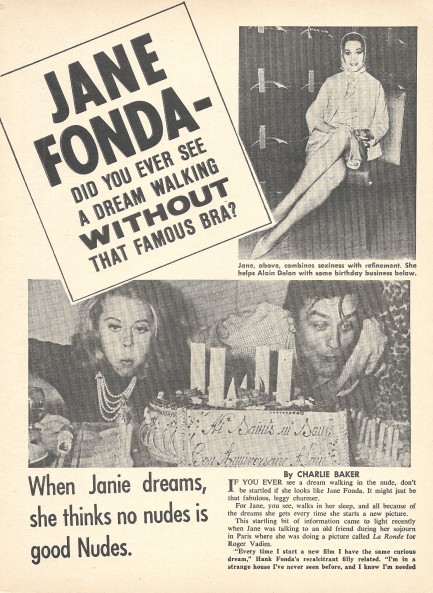 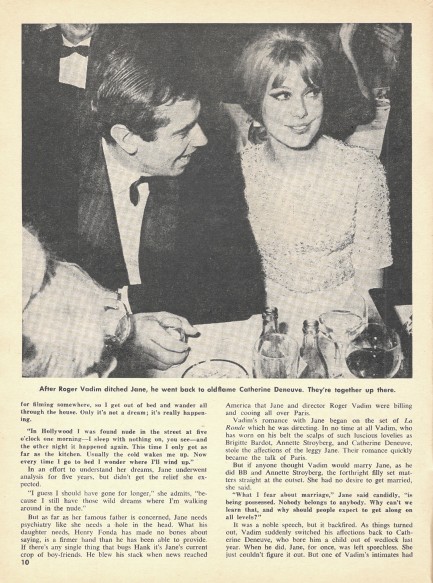 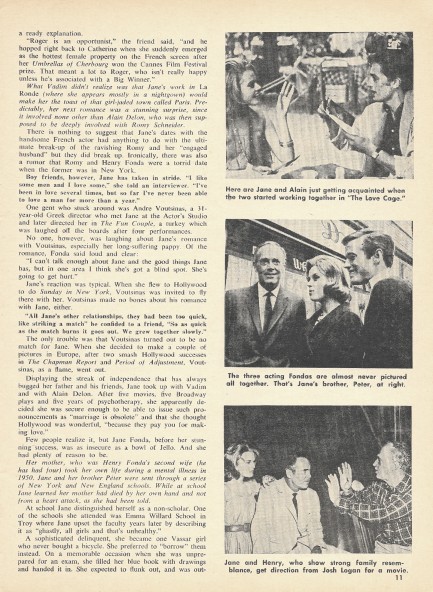 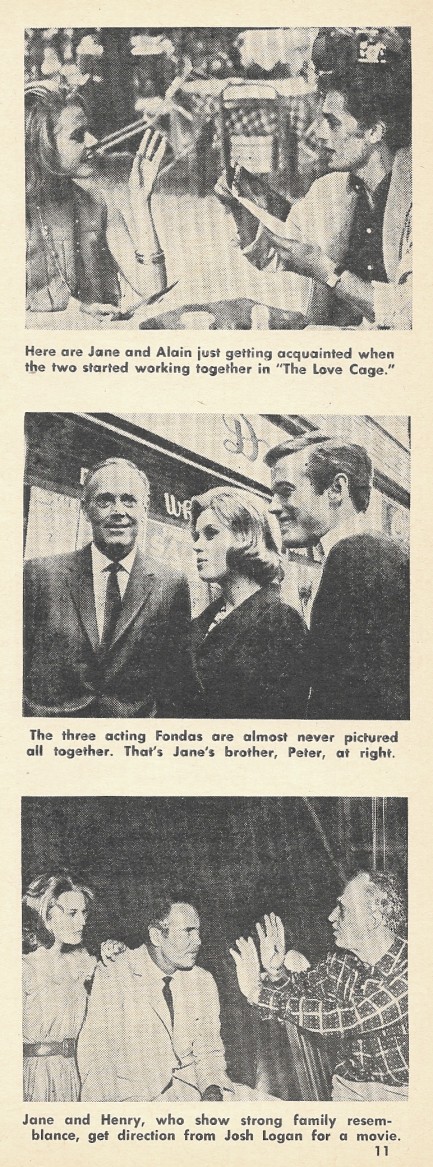 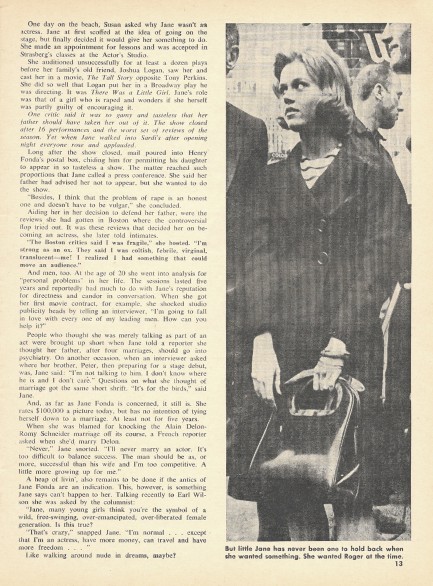 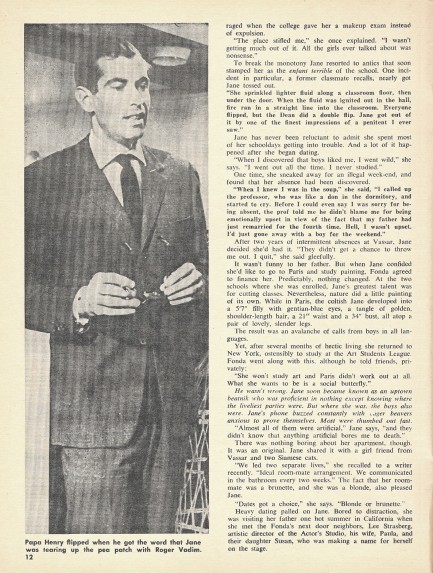 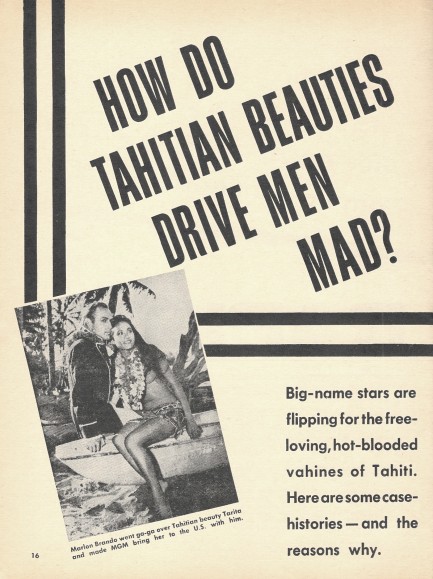 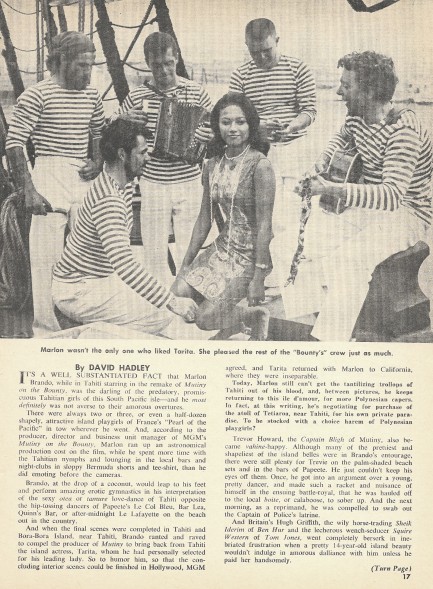   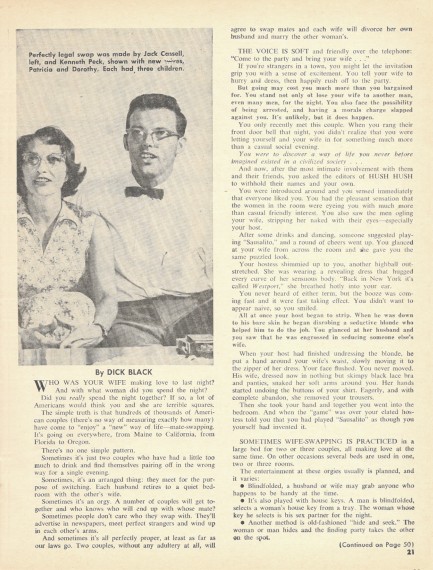 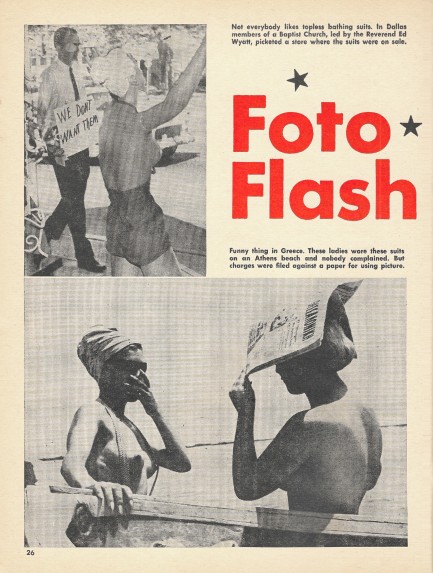 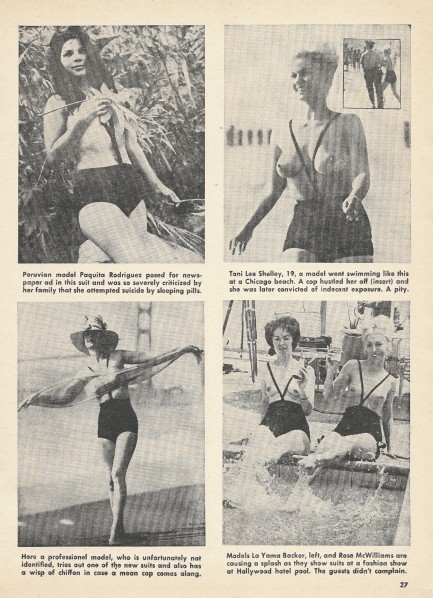 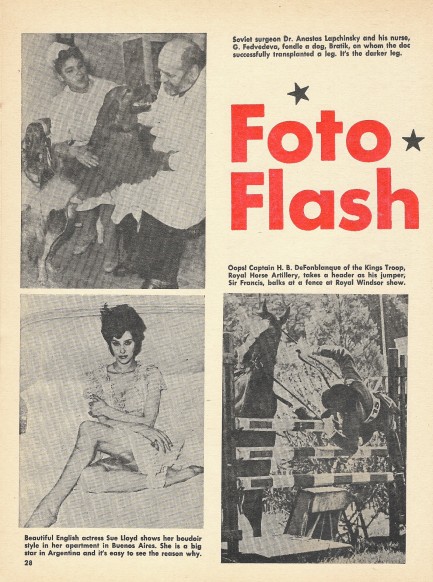 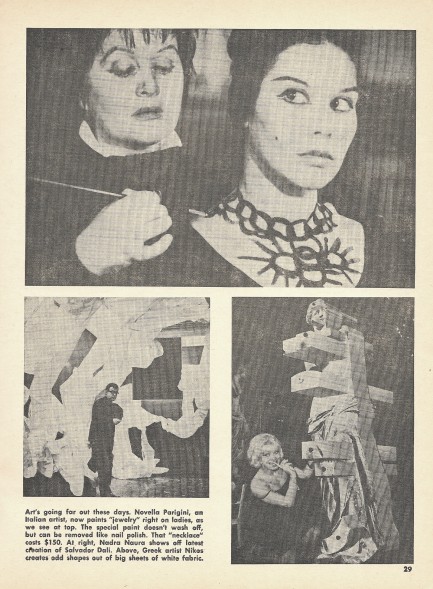 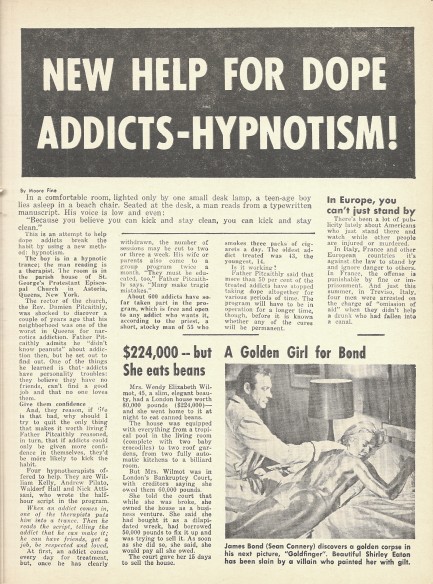 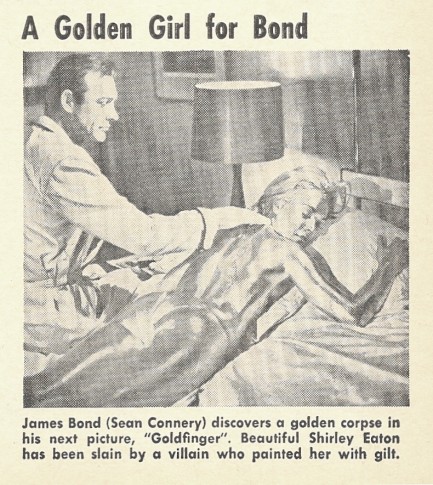 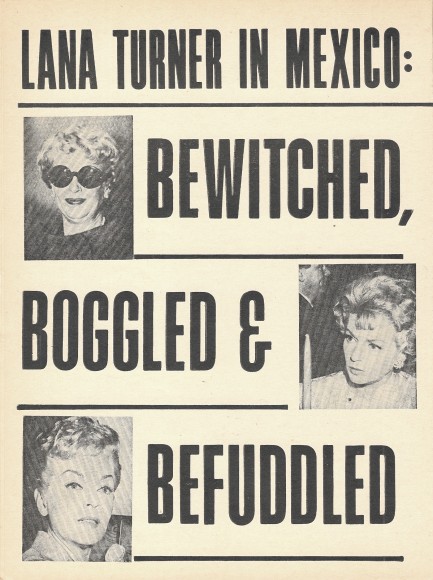 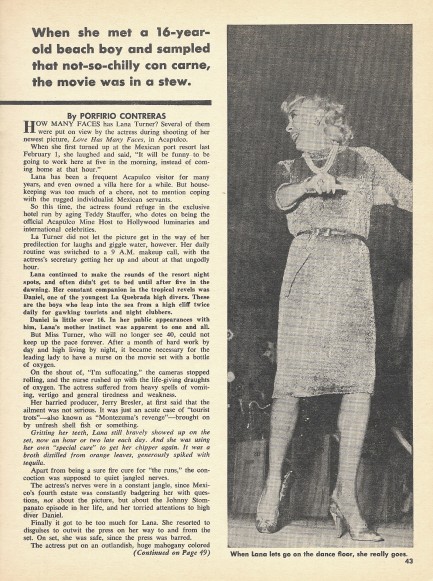 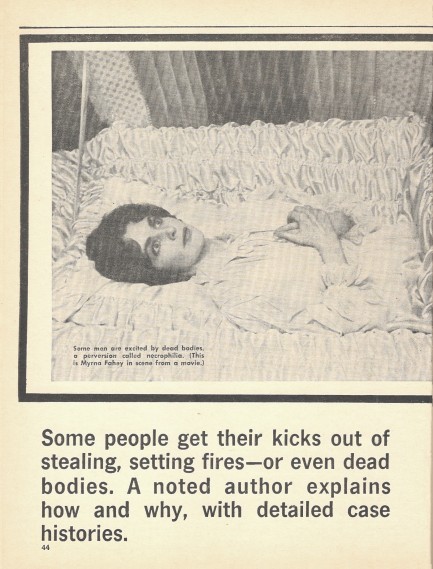 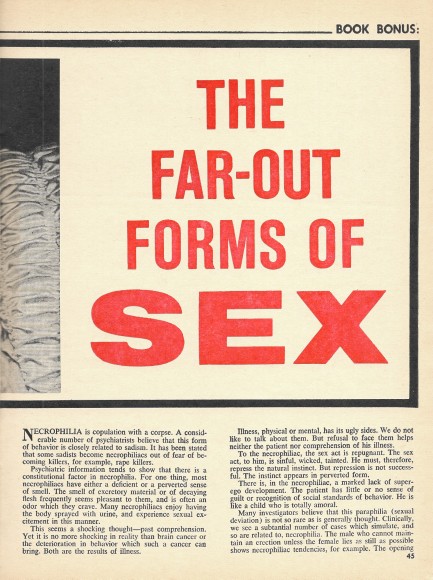 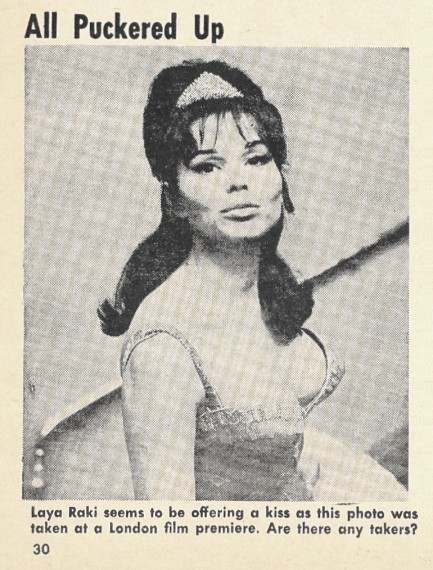 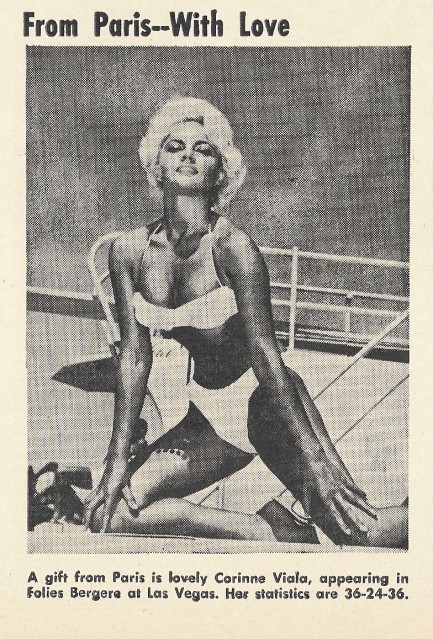
 What lies underneath. 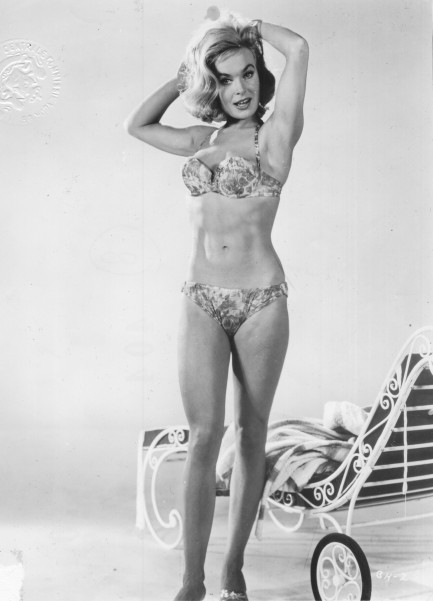
British actress Shirley Eaton appeared in about twenty films before her role as the ill-fated Jill Masterson in 1964’s Goldfinger made her one of the most iconic guest stars of the Bond series. Her turn as a woman who is murdered by being covered in gold paint is in fact so central to the 007 universe that it’s arguably the single most known moment from the series. These days you see many more photos of Eaton painted gold than in her own skin, so we thought we’d rectify that a bit with the above shot. It was made to promote The Girl Hunters and it dates from 1963. See a few more Goldfinger images here and here.
 The man with the Midas touch. 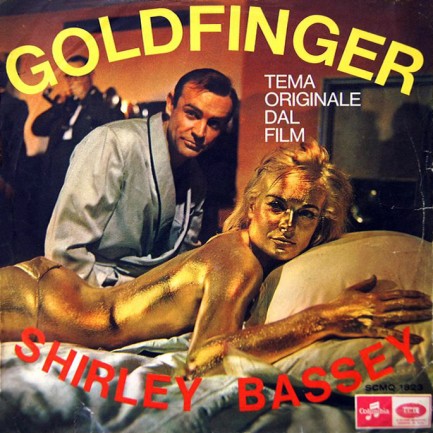 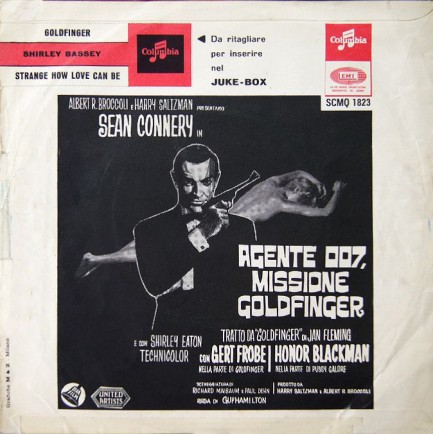
The Japanese weren’t the only ones who produced amazing 45 sleeves for James Bond music. Above you see art for Shirley Bassey’s Bond theme “Goldfinger,” released by Columbia Records and EMI in Italy in 1965, with Sean Connery and gold plated Shirley Eaton caught during a moment between takes on the set. In Italy the movie was called Agente 007, Missione Goldfinger, which is why the title on the reverse differs from the front. Check out those Japanese Bond sleeves here.
 We’ve got something special up our sleeves. 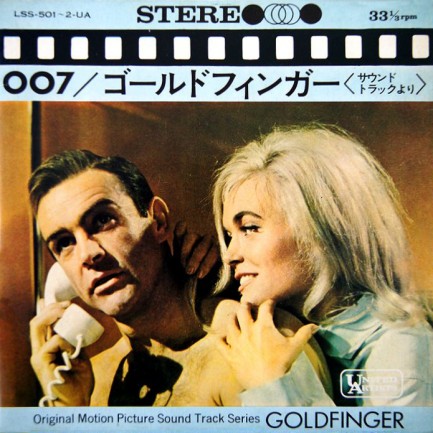
Above and below are the front and rear sleeves of four Japanese soundtrack pressings for the 1960s James Bond films Thunderball, From Russia with Love, You Only Live Twice, and Goldfinger. The themes were sung by Tom Jones, Matt Munro, Nancy Sinatra, and Shirley Bassey respectively, and pictured along with Sean Connery you see Bond beauties Claudine Auger and Shirley Eaton. Ms. Eaton, as wrong-place wrong-time Jill Masterson, had the dubious honor of being suffocated under a coating of gold paint, certainly one of the most infamous deaths of any Bond femme. We think these sleeves are great, and if you agree and want to see a lot more excellent 007 soundtrack art, check our previous posts here, here, and especially here. On a related note, the Bond franchise’s fiftieth anniversary is next month, and in honor of the occasion former star Roger Moore, along with co-stars Britt Ekland and Richard Kiel, are touring around England with a Blu-ray box set of all the films, which are stored inside a gold case that is in turn comfortably riding in one of Bond’s preferred vehicles, an Aston Martin DBS. Actors, auto, and discs are visiting some of the iconic locations of the Bond series in advance of the release of the next film, which is entitled Skyfall. You can read more about all that here.
|
 |

The headlines that mattered yesteryear.
2003—Hope Dies
Film legend Bob Hope dies of pneumonia two months after celebrating his 100th birthday. 1945—Churchill Given the Sack
In spite of admiring Winston Churchill as a great wartime leader, Britons elect
Clement Attlee the nation's new prime minister in a sweeping victory for the Labour Party over the Conservatives. 1952—Evita Peron Dies
Eva Duarte de Peron, aka Evita, wife of the president of the Argentine Republic, dies from cancer at age 33. Evita had brought the working classes into a position of political power never witnessed before, but was hated by the nation's powerful military class. She is lain to rest in Milan, Italy in a secret grave under a nun's name, but is eventually returned to Argentina for reburial beside her husband in 1974. 1943—Mussolini Calls It Quits
Italian dictator Benito Mussolini steps down as head of the armed forces and the government. It soon becomes clear that Il Duce did not relinquish power voluntarily, but was forced to resign after former Fascist colleagues turned against him. He is later installed by Germany as leader of the Italian Social Republic in the north of the country, but is killed by partisans in 1945.
|

|
|

It's easy. We have an uploader that makes it a snap. Use it to submit your art, text, header, and subhead. Your post can be funny, serious, or anything in between, as long as it's vintage pulp. You'll get a byline and experience the fleeting pride of free authorship. We'll edit your post for typos, but the rest is up to you. Click here to give us your best shot.

|
|









































